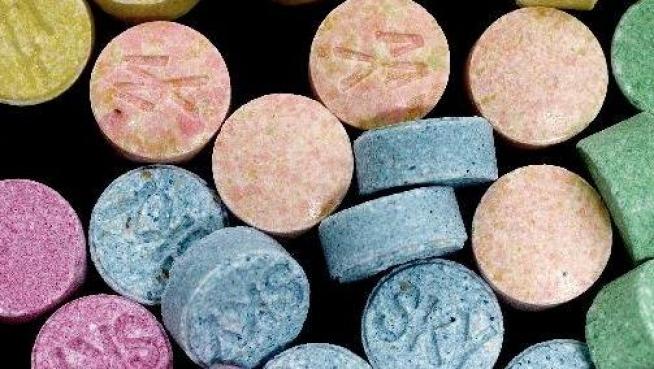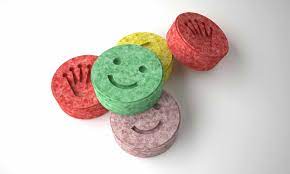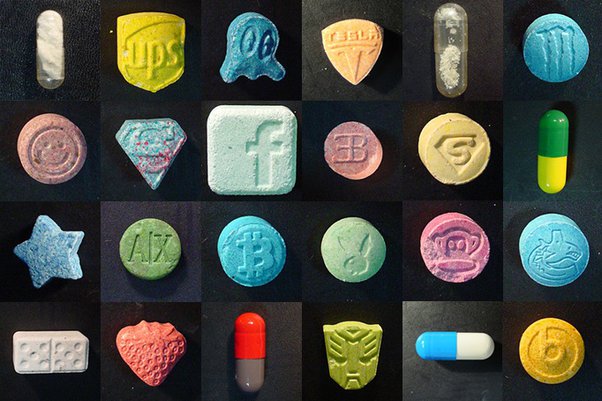Uncategorized
Molly and MDMA: Connection and Symptoms Explained
In the realm of psychoactive substances, MDMA and Molly often come up in conversations, particularly in the context of recreational use and its associated effects. The terms are frequently used interchangeably, leading to some confusion about their relationship. To fully understand how they are connected and the symptoms they produce, it is essential to delve into the details of what MDMA is, what Molly represents, and the symptoms associated with MDMA use. This comprehensive blog post will explore these aspects, providing a thorough analysis of MDMA and Molly, and their effects on users.
Is Molly MDMA?
The relationship between Molly and MDMA is a common point of confusion, but understanding their connection requires a closer look at their definitions and characteristics.

1. What is MDMA?
MDMA, or 3,4-methylenedioxy-methamphetamine, is a synthetic drug known for its stimulant and empathogenic properties. Originally synthesized in 1912 by the German pharmaceutical company Merck, MDMA was initially intended for use in psychotherapy due to its ability to facilitate emotional openness and reduce anxiety. However, it gained widespread popularity in the 1980s as a recreational drug, particularly within the rave and electronic dance music (EDM) communities.
MDMA works primarily by increasing the release of serotonin, dopamine, and norepinephrine in the brain. This leads to a range of effects, including heightened sensory perception, emotional closeness, and a sense of euphoria.
2. What is Molly?
Molly is a term commonly used to describe MDMA in its pure crystalline or powder form. The name “Molly” is derived from the word “molecular,” implying that it is a pure, unadulterated form of MDMA. Molly is typically sold as a white or off-white powder or crystal and is often consumed in this form.
3. The Purity Myth
While Molly is marketed as pure MDMA, this perception can be misleading. In reality, products sold as Molly can be adulterated with other substances, such as synthetic cathinones (“bath salts”), methamphetamine, or caffeine. The term “Molly” does not guarantee the purity of the substance, and users may encounter products with varying contents.
4. Key Differences
- Form: MDMA can be found in various forms, including tablets (commonly known as Ecstasy) and powder or crystal (Molly). Molly specifically refers to the crystalline or powder form of MDMA.
- Purity: While MDMA can be found in different forms, the term Molly is often associated with a desire for purity. However, both MDMA and Molly can be subject to adulteration.
- Use: The effects and risks of MDMA and Molly are similar, but the form in which they are consumed can influence the user’s experience. Tablets (Ecstasy) may contain additional substances, while Molly is typically consumed as a powder or crystal.

MDMA Symptoms: What to Expect
Understanding the symptoms of MDMA use is crucial for making informed decisions about its consumption and managing potential risks. MDMA affects various neurotransmitter systems in the brain, leading to a range of physical and psychological symptoms.
1. Positive Symptoms
MDMA is known for producing a range of positive effects that users often seek:
- Euphoria: One of the most notable effects of MDMA is a profound sense of euphoria and well-being. Users often report feeling extremely happy and content.
- Emotional Closeness: MDMA enhances feelings of empathy and emotional closeness with others. Users may experience increased emotional connection and openness in social interactions.
- Enhanced Sensory Perception: MDMA heightens sensory experiences, making sounds, colors, and textures appear more vivid and enjoyable.
- Increased Energy: The stimulant properties of MDMA lead to increased energy and reduced fatigue, which is why it is often used in high-energy environments such as dance clubs and music festivals.
2. Negative Symptoms
While MDMA can produce pleasurable effects, it can also lead to several negative symptoms and side effects:
- Increased Heart Rate and Blood Pressure: MDMA stimulates the release of norepinephrine, leading to increased heart rate and elevated blood pressure. This can be particularly concerning for individuals with pre-existing cardiovascular conditions.
- Dehydration and Overheating: MDMA can impair the body’s ability to regulate temperature, leading to overheating and dehydration. This is often exacerbated in high-energy environments where physical exertion and heat are factors.
- Jaw Clenching and Teeth Grinding: Some users experience involuntary jaw clenching and teeth grinding, which can be uncomfortable and potentially harmful.
- Nausea and Vomiting: MDMA can cause gastrointestinal distress, leading to symptoms such as nausea and vomiting.
- Anxiety and Paranoia: While MDMA generally enhances feelings of well-being, some users may experience anxiety, paranoia, or agitation, especially with higher doses or in unfamiliar settings.
3. Long-Term Effects
Repeated use of MDMA can lead to long-term effects and potential health concerns:
- Serotonin Depletion: MDMA’s impact on serotonin levels can lead to depletion, resulting in mood swings, irritability, and depressive symptoms. This is often referred to as “serotonin depletion” or “crash.”
- Cognitive Impairment: Chronic use of MDMA can result in cognitive deficits, including memory problems and reduced attention span.
- Addiction and Dependence: While MDMA is not considered as addictive as some other substances, there is still a risk of developing psychological dependence or abuse.
- Neurotoxicity: Research suggests that excessive or repeated use of MDMA may cause neurotoxic effects, impacting brain function and potentially leading to long-term changes in mood and cognition.
Managing Risks and Ensuring Safety
Given the potential risks and side effects associated with MDMA and Molly, it is important for users to take steps to minimize harm and ensure safety.
1. Testing and Purity
To mitigate the risks associated with adulteration, users should consider testing substances for purity. Reagent testing kits are available that can help identify the presence of MDMA and detect potential adulterants.
2. Hydration and Temperature Regulation
Maintaining proper hydration and monitoring body temperature are crucial when using MDMA. Users should drink water regularly, avoid excessive heat, and take breaks to cool down.
3. Dosage and Frequency
Moderation is key to reducing the risk of adverse effects. Users should be cautious with dosing and avoid frequent or high-dose use to minimize potential harm.
4. Mental Health Considerations
Individuals with pre-existing mental health conditions should be especially cautious when using MDMA, as it can exacerbate symptoms or lead to new issues. Seeking professional guidance and support is important for those considering MDMA use.

Conclusion
The relationship between Molly and MDMA is one of close association, with Molly representing a form of MDMA in its crystalline or powder state. While both terms are often used interchangeably, understanding their distinctions and the potential for adulteration is essential.
MDMA produces a range of symptoms, including euphoria, emotional closeness, and enhanced sensory perception. However, it also carries the risk of negative effects such as increased heart rate, dehydration, and anxiety. Long-term use can lead to more serious health concerns, including serotonin depletion and cognitive impairment.
For those considering the use of MDMA or Molly, it is crucial to prioritize safety by understanding the substance’s effects, testing for purity, managing hydration and temperature, and being mindful of dosage and frequency. By staying informed and taking precautions, users can better navigate the risks and enjoy a safer experience with these substances.
